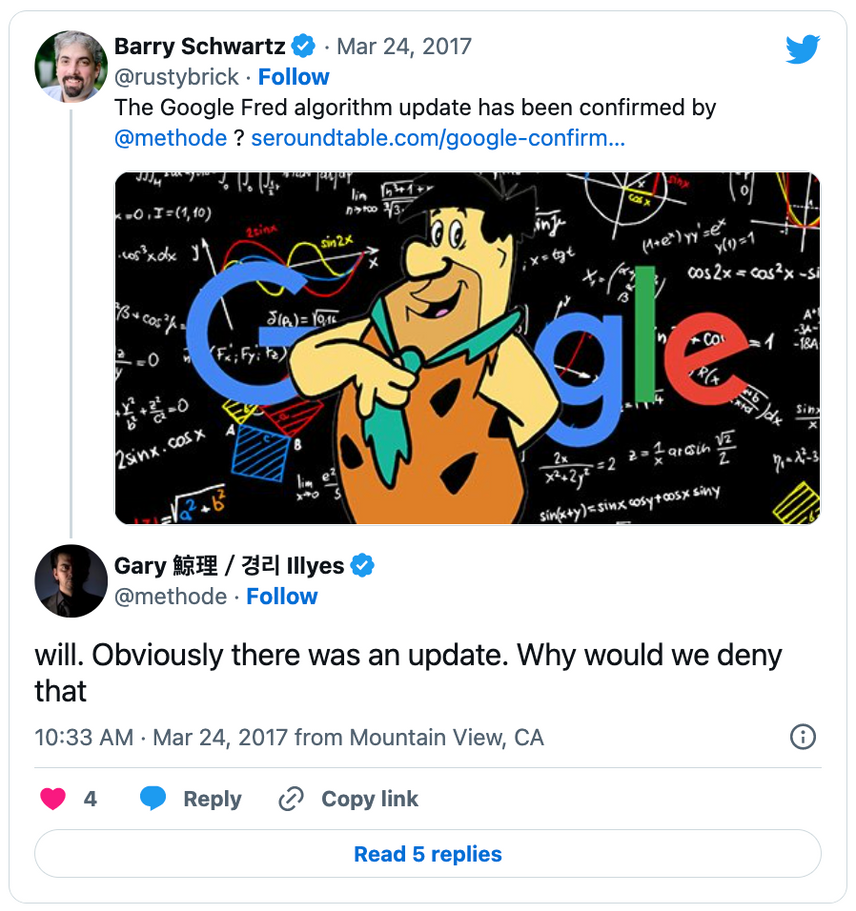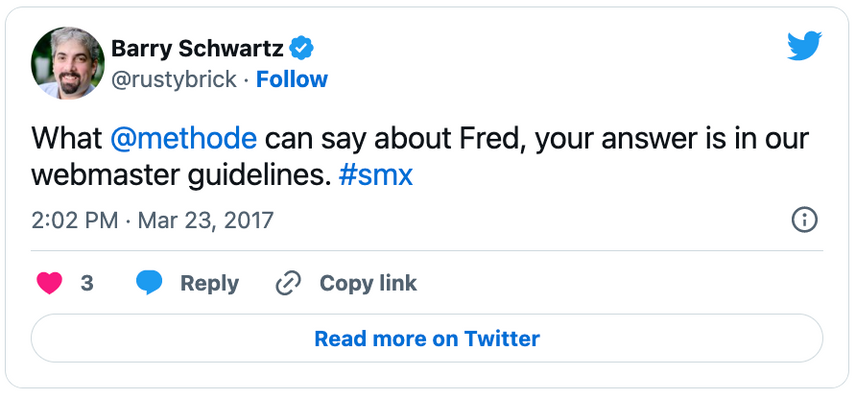What is Google Fred? Your Guide To The Fred Algorithm Update
- Industry News
- By Sam Pena
- 4 minutes read
Was your site affected by the Google Fred algorithm update? Find out why your rankings took a hit and what you can do to fix it.
In March of 2017, Google rolled out an algorithm update dubbed "Fred," and reactions across the industry came swift and fierce. In March and the months following, affected sites saw up to a 90 percent drop in traffic. As traffic and rankings took a hit, panicked SEOs from coast to coast began tinkering, tweaking and deleting in an effort to get back in Google's good graces.
What does Google Fred mean for SEOs?
The short answer: Create great content that's aligned with search intent. Google Fred is just one of the daily algorithm updates Google makes so that it's algorithm more closely mirrors the heart, mind and needs of a customer. When it comes to updates to google's algorithm, SEOs should focus on their customer as the algorithm, and they won't have to worry about these updates as often.
But let's get into the nitty-gritty. This guide explains it all.
What was the Google Fred algorithm update?
Google Fred was a series of updates that occurred in March of 2017. While Google was vague about what this update specifically targeted, SEOs determined that Google Fred primarily affected low-quality, ad-heavy sites with thin content and bad backlinks.
March's algorithm update was just another in a long line of algorithm updates Google has made over the years to provide a better experience for the searcher and to ensure content that appears in a SERP truly speaks to the search intent behind the query.
An "update" was eventually confirmed by Google's Webmaster Trends Analyst Gary Illyes:

Why is it called Fred? Well obviously…

Which sites did the Fred algorithm update target?
Here's a sample of what SEO experts are reporting post-Fred:
- According to Barry Schwartz's research published on Search Engine Land , about 95 percent of the sites that got hit were ones with content that "look[s] to be written for ranking purposes and then has ads and/or affiliate links sprinkled throughout the article... they seem to have content on a vast array of topics that are not adding all that much value above what other sites in the industry have already written."
- Meanwhile, Sreelal G. Pillai reports on TechWyse that affected sites also have low-quality backlinks in common—meaning that the sites that link back to them all have low domain authority.
- StatCounter came to the same conclusion , determining that sites with unnatural backlinks and "invaluable, outdated or ad-heavy content" were hurt the most by this update.
So... what gives?
Really, Fred shouldn't come as much of a surprise. This is another update in a string of updates that Google makes every day to improve their algorithm and the quality of their SERP results. Fred just seems to be one that impacted many sites across the web, specifically ones that are ad-heavy with low-quality content focused on revenue generation. Google is making good on its word to reward sites that provide valuable content that helps users, not just earn a quick internet buck.
Here at Conductor, we saw a lot of movement in many verticals post-Fred. Many eCommerce sites took a hit for the first couple weeks after the update, and then we saw rankings come back in the third and fourth weeks. This is not out of the ordinary for Google, either; Google tends to dial things up, and then they like to dial things back. It’s what they do.
What can marketers do in the wake of Fred?
Short-and-sweet answer: follow the Google webmaster guidelines .

In fact, according to an SEO Roundtable report , Gary Illyes said this update was all about dinging sites that have failed to heed the guidelines. That means:
- Create high-quality, relevant content that aims to help your readers and users
- Don't overload your site with a bunch of ads or affiliate links
- Make sure users can identify your ads as such; don't try to deceive users into thinking ads are really site content
- Look for spammy, unnatural backlinks and disavow them
If you didn't see a drop in traffic or keyword rankings after Fred, just keep doing what you're doing—go forth and continue to create great content. But if you did, let Fred serve as a warning to you, because this certainly won't be the last Google quality update. Straighten out and fly right today.







